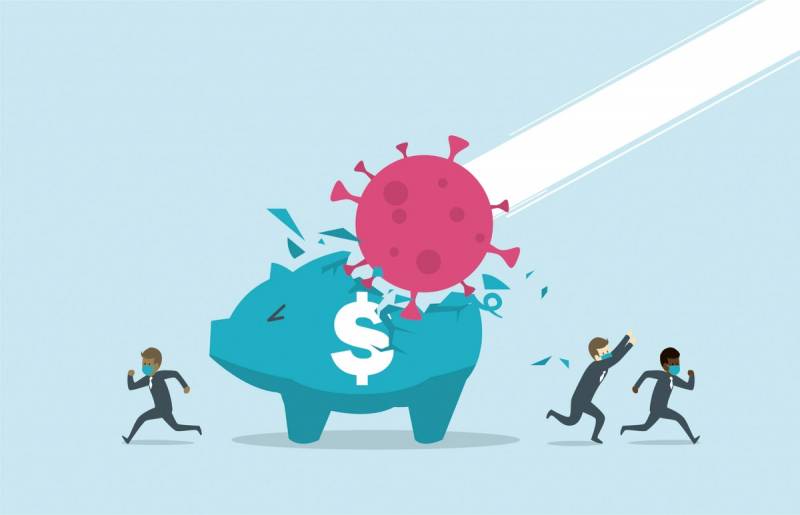Last week, Assemblymember Phil Ting, a San Francisco Democrat who chairs the budget committee, announced his priorities for the session. They included transitional kindergarten for all 4-year-olds, more financial aid for college students, more money for low-income families through the state’s earned income tax credit and making parents who don’t work eligible for the state’s young child tax credit of up to $1,000.
“Our major priority is making sure we do everything to get money into the pockets of the most vulnerable Californians,” Ting said. “So many Californians are struggling. They’re on the brink of homelessness.”
Toni Symonds, chief consultant for the Assembly Committee on Jobs, Economic Development, and the Economy, speaking on a panel about the new poverty data, said that lawmakers are considering expanding subsidized child care for essential workers, salary subsidies for part-time workers at businesses reopening after regional shutdowns and food assistance, such as the $365 the state offered to families with children last spring.
Matt Fleming, spokesperson for the Assembly Republican Caucus, said that Republican lawmakers, too, are focused on getting money into people’s pockets as quickly as possible. GOP lawmakers are considering bills to redirect funding from California’s floundering high-speed rail to education, fix the state’s beleaguered Employment Development Department and repeal Assembly Bill 5, which makes it harder to classify workers as contractors. Above all, he said, they’ll advocate to keep businesses open and schools in person as much as possible in the coming months.
“Governor Newsom’s COVID shutdowns have disproportionately targeted those industries that provide jobs to low-income families,” said Senate Republican Leader Shannon Grove of Bakersfield in a statement. “Democrat policies have left them with fewer jobs, more unpaid bills, and less opportunity for their children.”
Recent History of Economic Inequality
The gap between California’s haves and have-nots has widened markedly since 1980, with the loss of manufacturing jobs, more automation, rising incomes for highly educated workers, declining collective bargaining power and rising numbers of less-educated immigrants, the PPIC report noted.
In 1980, wages for the 10% of families with the highest incomes were 7.4 times higher than for families in the bottom 10%. By 2019, that gap had widened to 9.8 times higher.
Recessions have historically made inequality worse.
The highest-income families generally take a hit of up to 7% then recover within a few years. Meanwhile, the lowest-income families often face “much steeper and deeper declines,” of up to 20% in wages, PPIC’s Bohn explained. In three of the last four recessions, it has taken them a decade on average to recover their pre-recession wages.
But following the recovery from the Great Recession, things were looking up. A historically long period of economic growth had seen incomes for the poorest Californians rise from $20,000 in 2014 to $27,000 in 2019, a 34% increase that outpaced income growth for the highest earners.
Then the pandemic hit, putting entire low-wage sectors out of work, like restaurants, retail, entertainment, tourism and beauty and barber shops. In the spring, as many as 44% of workers in families with incomes below $30,000 were either unemployed, working part time though they preferred to work full time or had stopped looking for jobs, according to the report. By the fall, that percentage had only dropped slightly, to about 37%.
Solutions on the Horizon?
The billions of dollars that the CARES Act pumped into California lifted an estimated 3.5 million residents out of poverty in April, Columbia’s Parolin said. But that number dropped to 600,000 in October as unemployment benefits dried up.
Another 750,000 Californians stand to lose unemployment benefits on Dec. 26, so if Congress doesn’t agree on a new stimulus package soon, California will see rising poverty rates in January, Parolin said.
Whether California’s short-term poverty rates stay high will largely depend on how Congress and the incoming Biden administration negotiate future stimulus packages.
Parolin said the federal government could quickly reduce monthly poverty by increasing the maximum benefit for food stamps by at least 15%, which it did during the Great Recession.
“What is clear to me is we need another round of stimulus last month and the month before, if not right now,” said Amy Everitt, president of Golden State Opportunity, a nonprofit that has advocated for expanding the state’s earned income tax credit.
Bohn emphasized that the state has policy options, too, and that Californians are hungry to fight inequality. In a September survey, PPIC found that 59% of residents thought the state should do more to reduce the gap between rich and poor. The idea was especially popular among African Americans, Asian Americans and Latino residents.
The PPIC report included a list of short-term state policy suggestions: targeting relief to hard-hit businesses, expanding safety-net benefits including to undocumented workers, investing in job training for workers in sectors like leisure and hospitality that may not recover, and expanding subsidies for child care.
Bohn warned that “over the long term, getting jobs back is not sufficient for improving the score of inequality.” The report recommends that the state improve long-term economic mobility by investing in access to high-quality child care and higher education, and taking “corrective policy actions” to reverse long-standing underinvestment in low-income and communities of color.
Riverside County Supervisor V. Manuel Perez said more funding for child care is “essential” to getting families out of poverty, as is improving broadband access, which he called an “issue of civil rights” for children of color.
His largely Latino district, which encompasses the Coachella and Palo Verde valleys, is a microcosm of California’s persistent inequality, he said, even though “there’s a picture out there that the Coachella Valley is a playground.”
“Quite frankly, it is for those that have, and it’s not for those that don’t,” Perez said.

